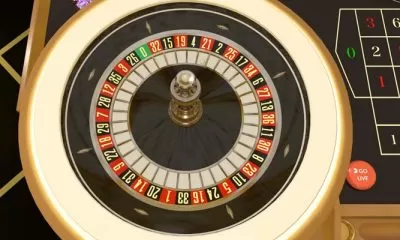Casino
Get Lucky at Poker Tournaments with These Game Tips!
Published
7 months agoon
By
Sam Jonson
Being the world’s best poker player is possible!
Playing poker successfully demands a multifaceted skill set. First and foremost, you must master poker’s various variants, hand rankings, and the nuances of betting strategies. A keen understanding of game theory and mathematics is crucial for calculating odds, pot odds, and making decisions rooted in probabilities.
Additionally, honing your psychological skills can be vital. This involves reading opponents’ behavior, concealing your own intentions, and managing emotions to prevent “tilt”. Astute observation skills enable you to spot patterns, detect bluffs, and adapt your strategy accordingly.
In short, poker excellence requires a blend of strategic acumen, mathematical prowess, psychological insight, and observational finesse to consistently come out on top in this challenging and competitive card game.
Before plunging into this game, players must learn the poker hierarchy of hands.
Poker ranking chart
Regardless of the types of poker, hands are categorized based on their relative strength and potential for winning the game. The standard poker hand rankings are essential to understanding the game and making informed decisions during gameplay. We have listed below the poker hierarchy from low to high in value.
High card
This is the lowest-ranking hand in poker, where no combination is formed, and the highest card in the hand determines its strength.
One pair
Two cards of the same rank, accompanied by three unrelated cards. The strength of the hand is determined by the rank of the pair.
Two pair
Two sets of pairs with one unrelated card. The higher-ranked pair is used to compare hands in case of a tie.
Three of a kind
Three cards of the same rank and two unrelated cards.
Straight
Five consecutive cards of different suits. The Ace can count as either high (A-K-Q-J-10) or low (5-4-3-2-A).
Flush
Five cards of the same suit, not necessarily in sequential order.
Full house
A combination of Three of a Kind and a Pair in the same hand.
Four of a kind
Four cards of the same rank and one unrelated card.
Straight flush
Five consecutive cards of the same suit. This is a powerful hand, as it combines the strength of a straight and a flush.
Royal flush
The highest-ranking hand in poker, consisting of A-K-Q-J-10 of the same suit. It is unbeatable in a standard game.
The poker hands order determines which player wins the pot, with higher-ranked hands beating lower-ranked ones. Knowing these hand categories is crucial for making strategic decisions and maximizing your chances of attaining a winning hand in poker games.
In poker, ties and kickers are essential concepts used to determine the winner when multiple players have hands of the same rank.
Ties
When two or more players have the same poker ranking (e.g., both have a One pair), the tiebreaker is determined by the highest cards in their hands. If these cards are also tied, the next highest cards are compared, and so on, until a winner is found. In some cases, when all five cards are identical between players, the pot is split equally among them, resulting in a tie.
Kickers
Kickers are used when players have hands like One pair, Two pair, or Three of a kind. If multiple players have the same rank of hand, the kicker(s) come into play. The kicker is the highest card in the hand that doesn’t participate in forming the main hand rank.
For example, in the hand A-A-10-8-4, the “Aces” are the main hand, and the “10” is the kicker. Kickers help distinguish the strength of otherwise similar hands and determine the winner.
Understanding ties and kickers is crucial for accurately evaluating poker winning hands and making decisions in situations where multiple players have similar hand rankings at a poker table.
Poker tips
Poker demands precise calculations, a patient approach, a deep understanding of probabilities, and playing style. If you seek rapid poker gaming advice, this article can be your guide to achieving success. Follow the below poker strategies to be a poker expert!
1. Opt for a more selective approach and infuse gameplay with a healthy dose of aggression.
Even the most skilled players encounter limitations when it comes to the number of starting hands they can engage with before the flop in a poker match. If you attempt to partake in too many poker hands, your chip stack will gradually dwindle.
Crafting a dependable preflop poker strategy stands as the most straightforward and swiftest means to enhance your overall performance. Yet, while establishing sturdy preflop ranges proves relatively manageable, maintaining the discipline required to adhere to them remains challenging.
Resist the temptation of impatience that might lead you into playing suboptimal hands. The optimal approach entails selecting a limited range of potent and playable hands and executing them with an aggressive style. Employing aggression across all your hands, even those with speculative potential like 8♠ 7♠ or 6♥ 6♣, serves to obscure the true strength of your hand.
2.Avoid initiating the limp in a hand.
Initiating a limp (simply calling the big blind before the flop) should be strictly avoided, especially when you are the first player to enter a pot. There are two primary reasons why employing this strategy is ill-advised –
- You forfeit the opportunity to seize the pot before the flop, which raising could achieve.
- By limping, you provide enticing pot odds to players positioned behind you, increasing the likelihood of facing multiple opponents and diminishing your chances of claiming the pot.
The sole circumstance in which limping becomes acceptable is when at least one other player has already employed this tactic. This scenario is referred to as over-limping, and it can be a prudent choice because it offers favorable pot odds for you to engage in the action, potentially allowing you to connect with a promising flop.
3.Opt to vigorously pursue ‘Semi-bluffs’ when holding drawing hands.
To excel in poker, mastering the art of bluffing is essential. However, employing ineffective bluffing strategies can swiftly deplete your funds at the table. So, how can you manage your bluffing frequency judiciously?
The key to bluffing successfully lies in allowing the strength of your cards to determine whether a bluff is warranted. This entails bluffing with hands that possess the potential to improve into a superior hand on subsequent streets, such as straight draws, flush draws, or even a few overcards to the communal board.
Visualize these drawing hands as your contingency plan in case your bluff is challenged. In essence, let your hand’s inherent possibilities guide your decision to bluff, ensuring that your bluffs are aligned with the potential for genuine improvement and increased chances of success.
4.Swiftly escalate the betting with your poker best hands to enhance the pot size.
Typically, the optimal strategy involves initiating bets with your robust hands to augment the pot size and safeguard your investment. However, this doesn’t mean you should unconditionally opt to bet or raise when holding strong hands after the flop. Instead, it’s prudent to consider checking your potent hands under certain circumstances –
- When the likelihood of an opponent drawing a superior hand is minimal.
- In scenarios where there are few alarming cards that could deter you from receiving substantial payouts in subsequent rounds of betting.
- When your adversary’s range primarily consists of hands lacking significant showdown value.
By judiciously assessing these factors, you can make an informed decision about whether to check or initiate a bet with your best poker hands, optimizing your chances of accumulating chips while mitigating potential risks.
5.If uncertainty clouds your judgment, it’s often prudent to fold.
When we opt to fold, we willingly surrender the opportunity to claim the pot, and our curiosity remains unsatisfied because we don’t discover our opponent’s hand.
Frequently, calling bets indiscriminately and at inappropriate moments ranks as the second swiftest route to poker losses (following ineffective bluffs). If ever you find yourself uncertain about whether to call or fold in response to a bet or raise, it is advisable to exercise prudence and opt for folding.
This prudent approach can be a valuable service to your poker strategy, preserving your stack and steering clear of unnecessary risks.
6.In the early stages of tournaments, prioritize steady and dependable poker strategies.
The notion of safeguarding your stack has its appropriate moments, but the initial stages of poker tournaments are not among them. This facet of tournament poker strategy often remains widely misconstrued.
It’s crucial to realize that, to secure a prize, you’ll likely need to increase your starting chip count significantly, often by double or even triple. Rather than adopting a defensive approach, it’s advisable to embrace a strategy characterized by soundness and aggression early on, with the objective of accumulating chips for a prolonged tournament journey.
Suppose you encounter a situation where your chip stack is dwindling, and you’re approaching the money bubble or a payout increment. In that case, that’s when it becomes prudent to transition towards a more survival-oriented style of play.
7.When your opponent displays vulnerability, seize the opportunity to launch an aggressive assault.
Players tend to underutilize checking when holding hands capable of withstanding several bets. Consequently, when they do choose to check, it often signifies possession of a relatively feeble hand that’s likely to fold when confronted with multiple wagers.
This situation aligns with the earlier reference to “bluffing with nothing.” When you observe your opponent displaying substantial vulnerability in a one-on-one pot, such as checking during both the flop and the turn, you can capitalize on this by employing an assertive bluffing approach.
8.Engage in games only when they demonstrate promising prospects.
It’s crucial to consistently position yourself in scenarios where your chances of winning are maximized. In poker, it’s vital to set aside your ego.
Ultimately, to maintain a profitable win rate, you typically need to outperform more than half of the players at the table.
If your aim is to generate substantial profits, you should actively seek out games featuring weaker opponents.
Here is a checklist to identify a favorable poker game –
- Regular instances of players employing the limp strategy.
- A notable prevalence of multiway pots, where multiple players are involved in a single hand.
- Re-raises are infrequent or frequent, indicating a particular playing style among participants.
Play these games solely when you are in the right frame of mind. A robust online poker strategy proves critical, involving the understanding of optimal moments for betting, bluffing, folding, and gaining insights into your opponent’s tactics. Success in the poker world hinges on making judicious decisions and maintaining an air of unpredictability to play better, ensure a good play and secure victory!
You may like
-
High Low Game: How and Why to Play, Variations, and Strategies
-
Live Speed Baccarat: Game Rules, How to Play, and Strategies
-
A Comprehensive Guide to Play Poker Online with Friends
-
How to Play Roulette: Everything You Need to Know about Casino Roulette Game
-
Play Online Roulette Successfully: 6 Proven Strategies to Help You Win
-
Caribbean Stud Poker: Poker Hierarchy, Payouts, and How to Play










